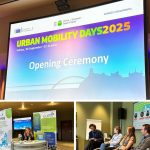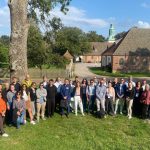On 9 and 10 September 2025, the Water Metro Conference took place in Fredrikstad, bringing together speakers, city representatives, researchers, and mobility innovators from across Europe to discuss how smart mobility, open ecosystems, and waterborne transport can contribute to more sustainable and connected urban mobility systems.
Co-organised by project partner and Living Lab Fredrikstad kommune under the frame of SUM, the event reflected the project’s overarching goal: to help cities integrate shared, digital, and cooperative mobility services into their mobility systems. Through its nine Living Labs across Europe, SUM supports local authorities in testing and scaling new business models and service concepts that foster accessibility, inclusiveness, and low-carbon mobility.

Key Insights from the conference
The first day of the conference focused on the technological and systemic integration of mobility services. Presentations by Roelof Hellemans (MaaS Alliance), Søren Sørensen (ITS Denmark), and Entur AS explored how cross-border cooperation and open standards can support seamless multimodal travel. Further insights from Fredrick Ekman (Chalmers University of Technology) and Halvor Vislie (Hyke) showcased pioneering examples of electric and automated ferries and their potential role in future mobility ecosystems.
The second day shifted to citizen engagement and co-design, with Yuren Chen (Chalmers University of Technology) highlighting how ferries can be meaningfully integrated into existing transport systems. Discussions emphasised that waterborne mobility can provide not only an efficient service, but also a distinctive travel experience—with welcoming stops, social spaces, and a strong sense of local identity.
The conference concluded with a ride on Fredrikstad’s free public ferry and a visit to the historic old town, illustrating how sustainable mobility can also enhance liveability and community connection.
As the consortium later gathered for the SUM Project General Assembly, the insights from Fredrikstad helped strengthen the project’s work across its nine Living Labs.




